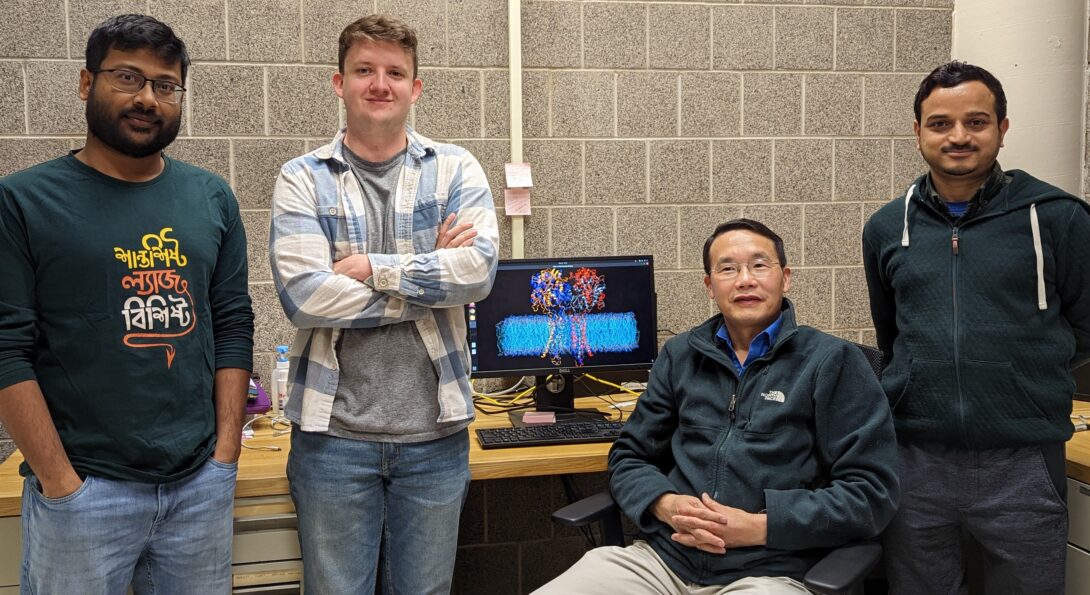Dr. Huan-Xiang Zhou’s research group publishes four papers in March

Introduction
Dr. Huan-Xiang Zhou’s research group publishes four papers in March. All four papers report on how proteins perform their functions in a membrane environment.
A major approach of the Zhou group is molecular dynamics (MD) simulations, where motions of atoms are simulated by treating them as point masses that obey Newton’s equation of motion. The simulations were carried out by UIC graduate students Souvik Day and Matt MacAinsh and postdocs Ramesh Prasad and Xiaoling Leng, on a powerful GPU cluster.
In a J. Chem. Phys. paper, Souvik performed MD simulations of N-WASP, a protein that is responsible for stimulating the initiation of actin polymerization, which in turn drives many essential cellular processes including immune response. The simulations revealed how a special lipid called PIP2 in cell membranes kicks N-WASP into the active form, ready to perform its function.
In a Protein Sci. paper, Matt performed MD simulations of tau, a protein that maintains molecular tracks in good order for molecular trains to run on but can also malfunction thereby contributing to Alzheimer’s disease. The simulations revealed that tau may spend much of its time on cell membranes, where it can either transfer to the molecular tracks or start to form aggregates ultimately leading to Alzheimer’s disease.
In a Commun. Biol. paper, Souvik performed MD simulations of FtsQ, a protein that plays a central role in the cell division of Mycobacterium tuberculosis, which is the bacterium causing the deadly disease tuberculosis. This study is a collaboration with scientists at Florida State University, who used nuclear magnetic resonance (NMR) spectroscopy to gain information on how FtsQ interacts with cell membranes and also with FtsZ, the protein that forms the scaffold of the cell-division machinery. The combination of MD and NMR resulted in in-depth understanding of the underlying mechanisms.
In a Nat. Commun. paper, Ramesh and Xiaoling performed MD simulations of the NMDA receptor, which is a ligand-gated ion channel that is the basis of learning and memory formation. This study is a collaboration with scientists at Stony Brook University, who used a technique called patch clamp to record minute electric currents through a pore inside the NMDA receptor. This study elucidated both the normal function of the ion channel but also the malfunction caused by a mutation that is identified in patients of a neurological disorder.